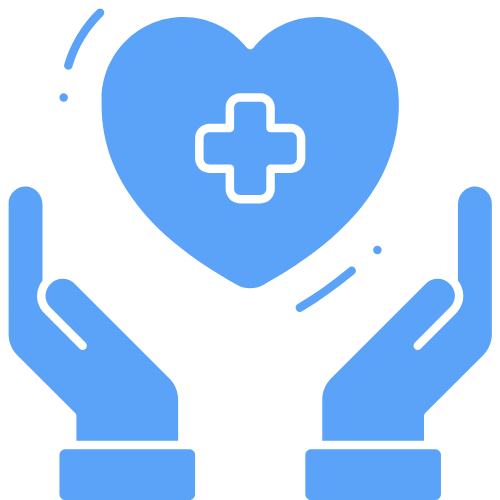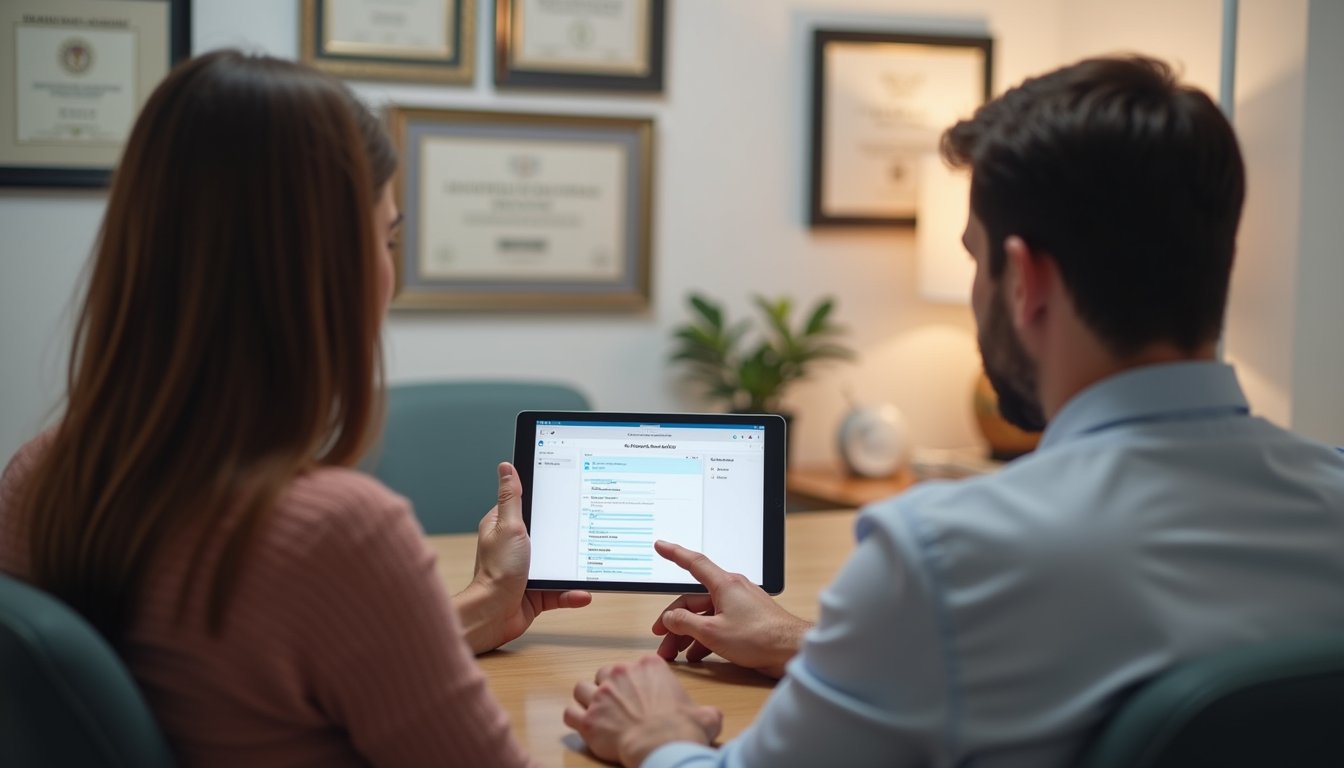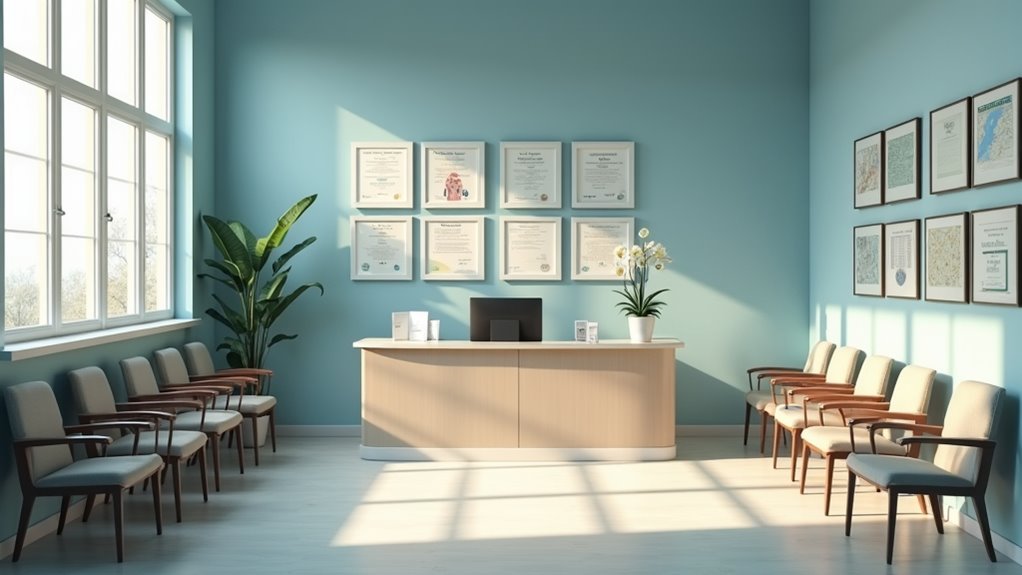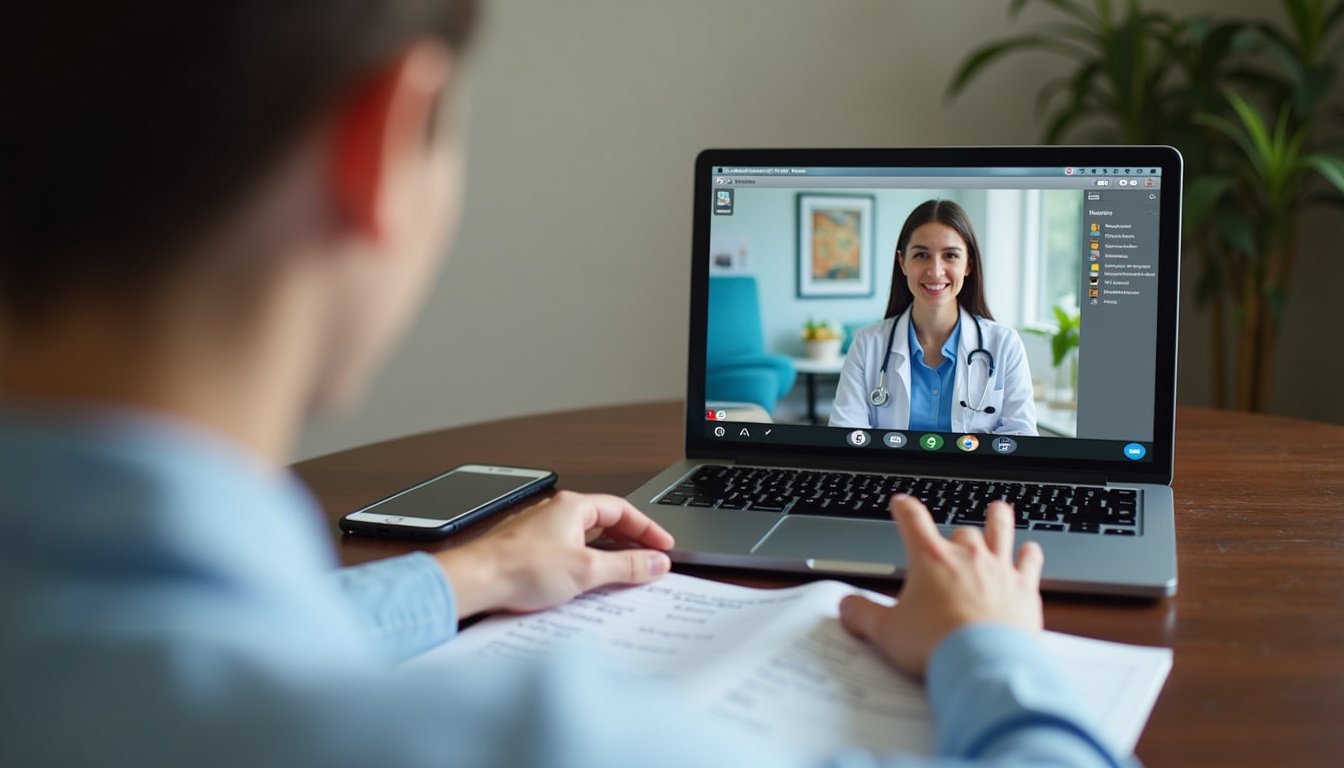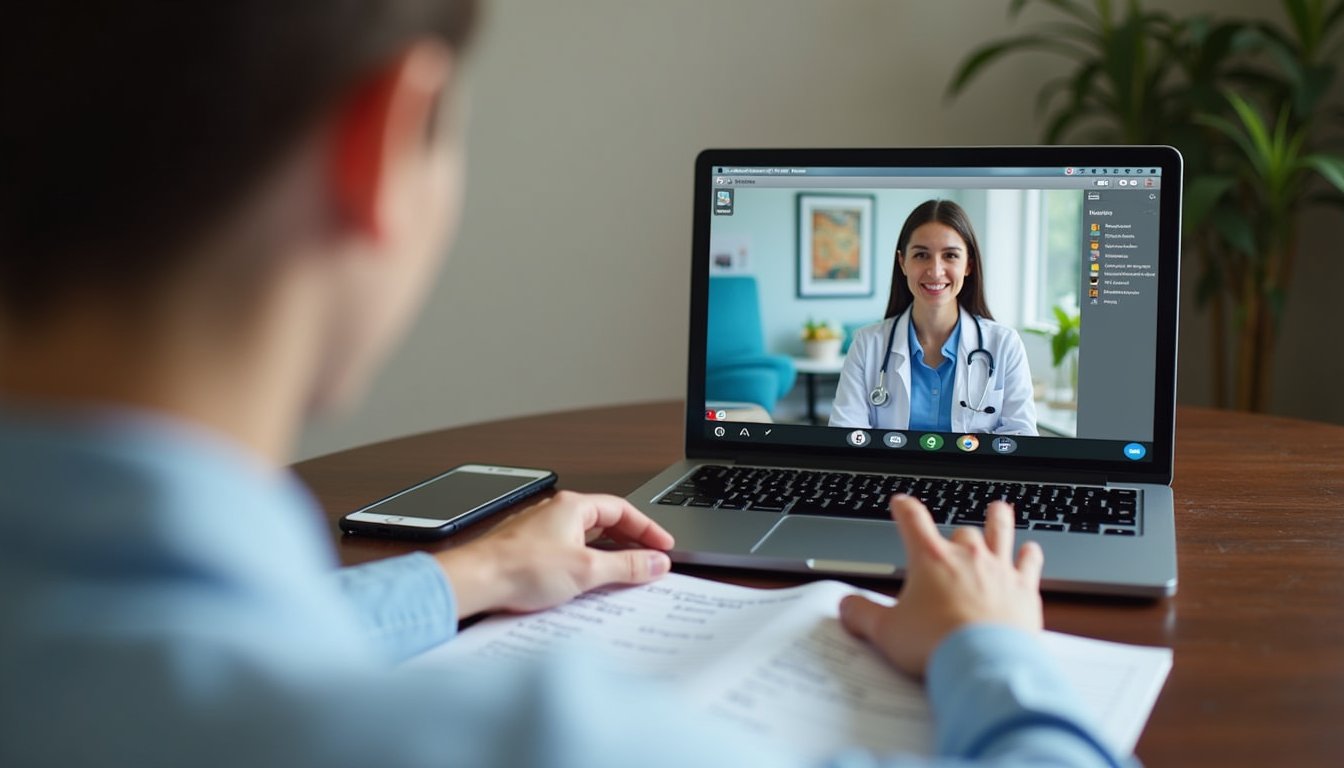Red light therapy is most effective when used 3-5 times weekly for 10-20 minute sessions. You’ll need 24-48 hours between treatments to enhance cellular response. Different conditions require specific protocols: acne needs 3-5 weekly sessions, psoriasis benefits from twice-weekly treatments, while pain management may warrant daily sessions. Watch for persistent redness lasting over 24 hours as a sign of overuse. Your ideal frequency depends on your treatment goals and body’s response to therapy.
Recommended Red Light Therapy Session Frequency
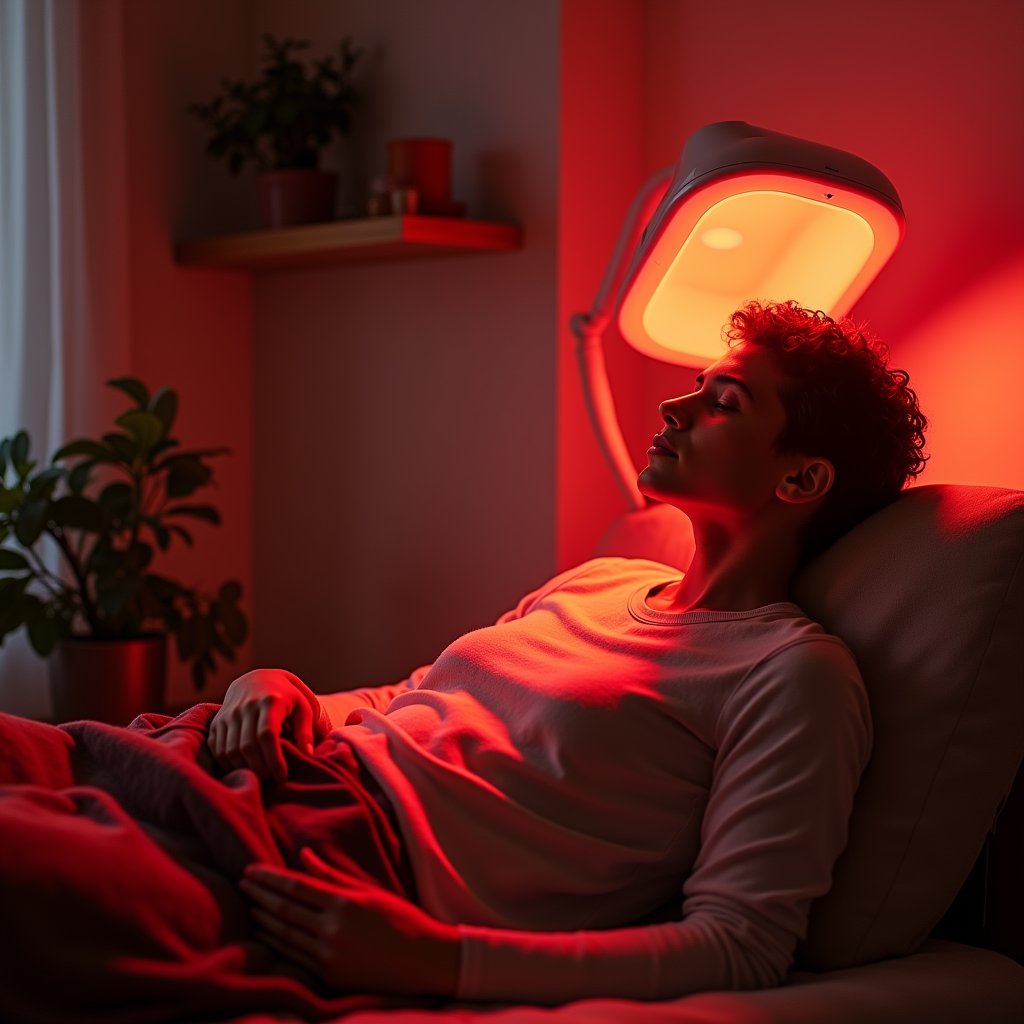
While individual needs may vary, most conditions respond most effectively to red light therapy when performed 3-5 times weekly for 10-20 minutes per session.
Consistency trumps frequency, so establishing a regular routine yields better results than sporadic intensive treatments.
Your treatment equipment will specify ideal session duration, but clinical evidence suggests allowing 24-48 hours between sessions enhances cellular response.
Daily use is possible but unnecessary for most conditions, as cells need time to process and utilize the light energy.
For therapeutic benefits, prioritize regular sessions rather than extended exposure times.
The body responds best to methodical treatment patterns rather than compensating for missed sessions with longer durations.
Keep in mind that results come from cumulative effects, not individual session intensity.
Positioning your device within 6 inches of skin ensures maximum effectiveness and optimal light penetration to the target tissues.
Taking a weekly break from treatment is recommended to prevent overstimulation and potential diminishing returns from excessive exposure.
Some users report significant improvements to skin elasticity and texture after several months of maintaining a consistent red light therapy schedule.
Determining Your Optimal Treatment Schedule
How can you identify the ideal treatment schedule for your specific needs? Establishing your personalized red light therapy regimen requires evaluating several key factors that influence treatment efficacy. Your best schedule will balance session intensity with frequency to achieve sustained therapeutic benefits without overexposure. Studies show that 10-20 minutes per session provides optimal cellular stimulation without diminishing returns. Most experts recommend maintaining 3-5 sessions per week for consistent results in skin rejuvenation and other common applications. The healing benefits of red light therapy can continue for 48-72 hours after treatment completion, particularly in certain demographics.
| Factor | Assessment Method | Adjustment Strategy |
|---|---|---|
| Skin Sensitivity | Monitor for redness/irritation | Decrease session intensity |
| Treatment Response | Track improvements weekly | Modify treatment duration |
| Device Specifications | Check manufacturer guidelines | Adjust distance and timing |
| Health Condition | Consult healthcare provider | Target specific treatment areas |
| Lifestyle Factors | Evaluate schedule constraints | Integrate with daily routine |
Begin with shorter, less frequent sessions (10 minutes, 2-3 times weekly) and systematically increase as tolerance develops. Your best schedule should produce consistent improvements without adverse reactions. Re-evaluate every 4-6 weeks to confirm continued efficacy as your body adapts to treatment.
Condition-Specific Treatment Protocols

Different conditions respond most effectively to specific red light therapy protocols, necessitating customized approaches for maximum efficacy.
For skin concerns, acne typically requires 3-5 weekly sessions of 10-20 minutes for 4-6 weeks, while psoriasis benefits from two 20-minute sessions weekly with 48 hours between treatments. Anti-aging treatments often recommend ten initial LIGHTWAVE LED Therapy sessions followed by monthly maintenance to sustain results. Devices like the Celluma Pro panel are used for 5 minutes daily to enhance overall skin health and reduce inflammation.
Pain management treatment variations include daily 10-20 minute sessions for acute injuries during the initial week, shifting to 3-5 weekly sessions for chronic conditions. For optimal results, many experts suggest three daily sessions of about 20 minutes each when treating persistent pain issues.
Hair regrowth demands consistency, with male pattern baldness responding to daily 6-minute morning treatments using specialized caps.
Wound healing protocols differ considerably, with surgical incisions requiring 1-2 daily sessions of 20-30 minutes for 1-2 weeks.
Neurological conditions demand structured individualized protocols, such as mild TBI treatment three times weekly for 20-30 minutes over six weeks.
Signs You May Be Overusing Red Light Therapy
While red light therapy offers numerous benefits, excessive use can trigger warning signs such as persistent skin redness lasting beyond 24 hours or unusual tenderness to touch.
You may notice diminishing returns from your treatments, including plateaued results, increased recovery times, or skin that appears unusually dull despite regular sessions. This aligns with the biphasic dose response concept where beneficial effects diminish or reverse with excessive exposure. Experts typically recommend limiting treatment to twice weekly sessions to maintain optimal therapeutic effects without risking overdose.
Fluctuations in your energy levels, including disrupted sleep patterns after evening sessions or unexpected daytime fatigue, often indicate your body needs a break from treatment. Some users may also experience mild skin irritation or swelling due to the heat generated during too-frequent therapy sessions.
Skin Irritation Warning Signs
Despite the general safety profile of red light therapy, recognizing potential warning signs of overuse remains essential for preventing adverse effects. Monitoring your skin for irritation signals helps guarantee ideal treatment outcomes while minimizing risks.
Pay particular attention to persistent redness symptoms that last beyond several hours post-treatment, as these may indicate inflammation from excessive exposure. Remember that red light therapy utilizes specific wavelengths that interact directly with skin cells. Exceeding recommended treatment frequency of 2-3 sessions weekly can significantly increase your risk of adverse reactions. Always wear eye protection during treatments to prevent potential eye strain or damage.
- Unusual warmth, tenderness, or swelling in treated areas that doesn’t resolve within expected timeframes
- Development of blisters, scabs, or burn-like sensations indicating potential thermal damage
- Increased skin dryness, flaking, or itching between sessions suggesting barrier disruption
- Changes in skin texture such as roughness, bumps, or increased pore visibility that weren’t present before
These warning signs warrant immediate adjustment of your treatment protocol and potentially consulting a healthcare provider.
Diminishing Treatment Benefits
Even the most effective therapies can lose their potency when overused, and red light therapy is no exception. You might be experiencing a treatment plateau if you notice stagnation in skin improvements, particularly in collagen production, wrinkle reduction, and hyperpigmentation treatment.
Watch for diminishing returns in healing processes wounds taking longer to close, persistent muscle soreness after workouts, and decreasing effectiveness in reducing inflammation.
Cellular energy decline is another key indicator, as overexposure can reduce ATP production and mitochondrial function.
Hair regrowth stagnation, including halted progress in thickness and density, suggests your treatment frequency needs adjustment. Consider reverting to the recommended 3-5 sessions per week rather than daily use if you notice decreased effectiveness in your hair restoration goals.
When benefits plateau despite continued sessions, it’s time to reassess your regimen. For most skin conditions like acne, dark spots, and scars, maintaining 10-15 minute sessions offers optimal cellular stimulation without overstressing the skin. Ideal results require balanced exposure not excessive treatment that can diminish the therapy’s effectiveness. Remember that red light therapy typically requires consistent treatment over several weeks or months to achieve optimal results.
Energy Level Fluctuations
Beyond treatment plateaus, your body’s energy systems may signal when red light therapy exceeds ideal frequency. Persistent fatigue despite adequate sleep often indicates cellular stress from overexposure. Your energy metabolism requires balance when RLT sessions become too frequent, mitochondrial function may temporarily decline rather than improve.
- Experiencing increased fatigue or feeling unusually drained after sessions
- Noticing decreased exercise performance despite continued training
- Finding yourself needing supplementary rest periods throughout the day
- Developing disrupted sleep patterns, particularly after evening treatments
Effective fatigue management requires monitoring these energy level fluctuations. Research suggests mitochondrial stress responses can trigger temporary energy depletion when cells receive excessive photonic stimulation.
Adjusting your treatment schedule typically reducing frequency to 2-3 times weekly often resolves these symptoms while maintaining therapeutic benefits without overwhelming cellular energy production mechanisms. Although this therapy is generally safe daily, it’s important to listen to your body’s response and adjust accordingly.
Finding Your Ideal Time of Day for Treatment
When should you schedule your red light therapy sessions for maximum benefit? Consider your natural circadian rhythm and daily energy patterns.
Morning routines with red light therapy increase alertness, raise cellular ATP production, and set a positive tone for your day ideal before workouts.
Start your day with red light therapy to boost energy at the cellular level and prime your body for peak performance.
Evening rituals promote relaxation, improve melatonin production, and enhance sleep quality, though avoid directing light at your face to prevent mental stimulation.
Midday sessions effectively combat afternoon fatigue and maintain energy levels, while post-workout treatments improve muscle recovery and reduce inflammation. You can safely incorporate daily sessions without worry, as red light therapy has minimal side effects when used properly.
What matters most is consistency rather than precise timing. Experiment with different schedules to determine what works best for your body.
Your ideal treatment time should align with your specific goals, whether they’re performance improvement, sleep enhancement, or general wellness.
Tracking Progress and Adjusting Your Regimen
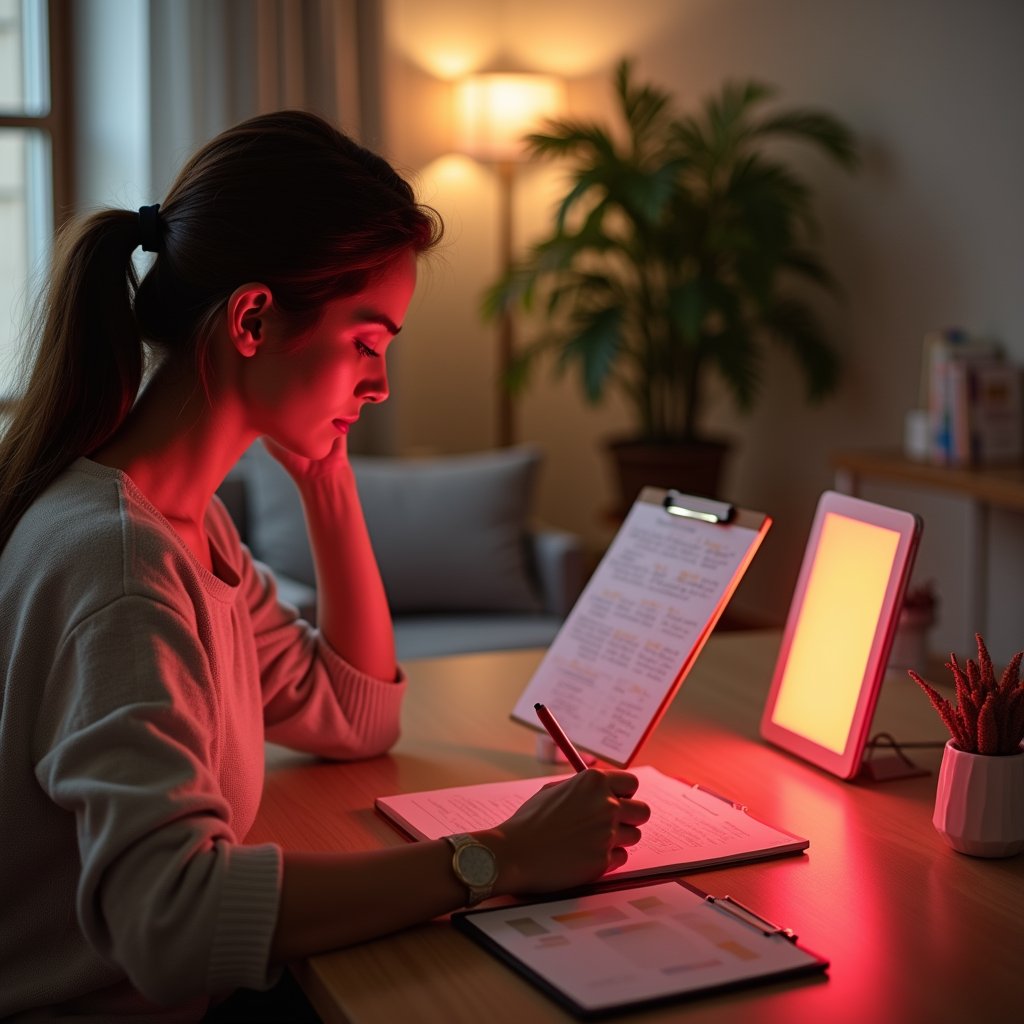
Setting measurable goals is essential for evaluating your red light therapy’s effectiveness, whether you’re targeting skin rejuvenation, pain reduction, or hair growth.
You’ll optimize the benefits of tracking by establishing clear baseline measurements before beginning treatment and reassessing at regular intervals, typically every 2-4 weeks.
Visual documentation methods such as consistent photography, detailed symptom journals, and standardized assessment scales provide objective evidence of your progress and help determine when adjustments to your regimen are necessary.
Setting Measurable Goals
Establishing concrete, quantifiable objectives forms the foundation of any successful red light therapy regimen. When implementing goal setting for your treatment plan, use the SMART framework ensuring your targets are specific, measurable, achievable, relevant, and time-bound. This approach transforms vague hopes into trackable measurable outcomes that guide your therapy experience.
- Define precise treatment objectives (e.g., “reduce knee pain from 7/10 to 3/10 within six weeks”)
- Document baseline measurements before beginning treatment
- Break larger goals into weekly milestones to maintain motivation
- Consult healthcare professionals to establish realistic expectations based on your condition
Your objectives should align with personal health priorities while remaining clinically relevant. By establishing clear metrics at the outset, you’ll create an objective framework for evaluating your therapy’s effectiveness and making necessary adjustments to your protocol.
Visual Documentation Methods
Effective progress tracking requires objective visual documentation to accurately assess your red light therapy results. Start by capturing standardized before and after photos in consistent lighting conditions to detect subtle changes that might escape daily observation.
These photo comparisons should be taken at regular intervals typically weekly or bi-weekly to create a thorough visual timeline.
For more precise measurement, utilize skin analysis apps that quantify improvements in wrinkles, pores, and pigmentation. These digital tools can detect changes imperceptible to the naked eye, providing numerical data to supplement visual evidence.
Consider investing in 360-degree imaging for full facial assessment, particularly if addressing multiple concerns simultaneously.
When possible, supplement visual tracking with colorimeter measurements to objectively document skin tone changes, especially if you’re targeting redness, hyperpigmentation, or general complexion improvements.
When to Consider Increasing or Decreasing Sessions
While following a consistent red light therapy regimen is essential for ideal results, you’ll likely need to adjust your session frequency based on your body’s response and treatment progress.
Pay attention to specific indicators that suggest session adjustments are necessary to optimize your treatment intensity.
- Increase frequency if you notice persistent skin conditions not improving after 4-6 weeks or when wound healing progresses slowly.
- Decrease sessions when entering a maintenance phase after achieving desired results or if you develop skin sensitivity.
- Watch for overuse signs including prolonged redness lasting over 24 hours or disrupted sleep patterns.
- Consider your individual factors including skin type, specific condition being treated, and device specifications.
Document your progress systematically and consult your healthcare provider regularly for personalized protocol adjustments, especially if you’re experiencing diminishing results or unexpected side effects.
Frequently Asked Questions
Can Red Light Therapy Be Combined With Other Skincare Treatments?
Yes, you can effectively combine red light therapy with other skincare treatments for improved results.
RLT works synergistically in combination treatments with topicals like vitamin C, retinoids, and hyaluronic acid. It complements professional procedures including microneedling, chemical peels, and injectables.
For maximum skincare benefits, apply serums before sessions, wait 24 hours after chemical peels, and avoid photosensitizing ingredients.
Always monitor your skin’s response when introducing new treatment combinations and consult a dermatologist when using prescription products.
Do Results Fade Completely if Treatments Are Stopped?
Yes, results typically fade if you discontinue red light therapy.
For skin rejuvenation, benefits gradually diminish as your natural aging processes resume without the stimulating effects of the treatment.
The duration of results varies skin improvements may last weeks to months, while pain relief effects often dissipate faster.
Some healing outcomes can be permanent once achieved.
Your individual response, initial treatment duration, and condition being treated all influence how quickly results will fade without maintenance sessions.
Should I Remove Makeup Before Red Light Therapy Sessions?
Yes, you should always remove makeup before red light therapy sessions.
Makeup creates a barrier that blocks light penetration to your skin cells, considerably reducing treatment effectiveness. Proper skin preparation, including thorough makeup removal with a gentle cleanser, guarantees ideal absorption of the therapeutic wavelengths.
Even thin layers of cosmetics, sunscreen, or skincare products can interfere with light transmission. For maximum benefits, maintain completely bare, clean skin during your treatments.
Is Red Light Therapy Safe During Pregnancy?
Pregnancy safety concerns with red light therapy warrant caution. Current evidence doesn’t conclusively demonstrate risks, but limited research exists.
You should consult your healthcare provider before starting treatment. When following therapy guidelines, avoid direct abdominal exposure, keep sessions short (10-15 minutes), and consider trimester-specific precautions.
Initial trimester use is generally discouraged, while second and third trimesters may offer benefits for discomfort with proper medical guidance and FDA-approved devices.
Can Children or Elderly People Use Red Light Therapy?
Both children and elderly can use red light therapy with proper precautions.
For children safety, always consult a pediatrician initially, use FDA-approved devices, reduce exposure times, and provide supervision. Children require eye protection as their developing retinas are vulnerable.
Elderly benefits include improved skin health, pain relief, and augmented muscle function. Seniors should start with shorter sessions, gradually increase duration, and consult healthcare providers if taking photosensitizing medications.
Monitor skin reactions in both populations and adjust accordingly.
